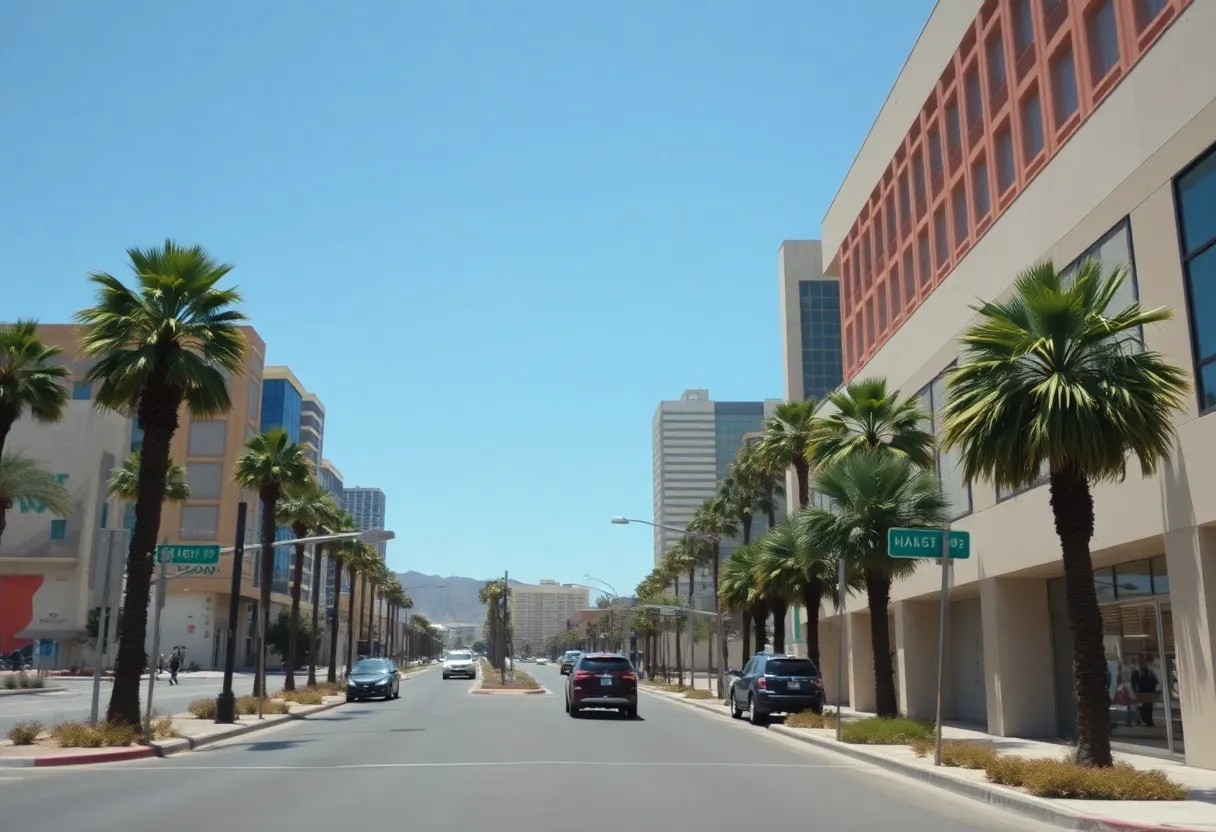News Summary
A recent study from the Desert Research Institute reveals that urban trees in Las Vegas may not deliver the significant air cooling benefits that residents expect amid escalating heat. While trees offer shade and can lower radiant temperatures by up to 30 degrees Fahrenheit, their overall impact on air temperature is minimal in the city’s arid conditions. This raises urgent questions for public health and urban planning, especially given the recent alarming heat-related deaths in the city.
Las Vegas is experiencing intense heat like never before, leading to the urgent need for effective cooling solutions. However, a recent study conducted by the Desert Research Institute (DRI) has revealed that urban trees may not offer the significant daytime cooling benefits residents expect in the city’s scorching climate.
The study highlights that while trees can reduce radiant temperatures by as much as 30 degrees Fahrenheit through providing shade, their effects on air temperature are limited, especially in arid environments like Las Vegas. With extreme weather becoming more commonplace, understanding the role trees play in mitigating heat is essential for public health and urban planning.
Researchers assessed both drought-tolerant and non-drought-tolerant trees to analyze their specific cooling effects through simulations. The findings indicate that although trees can block direct solar radiation, their overall impact on reducing air temperature is minimal in deserts, which tend to have hot, dry conditions. Consequently, shade from trees emerges as the primary benefit, rather than significant air cooling.
The implications of this study come at a critical time. Last year, Las Vegas recorded over 500 heat-related deaths, underlining the dangers posed by extreme heat. In response, Governor Joe Lombardo signed a bill that mandates the development of heat mitigation plans for both Las Vegas and Reno. Furthermore, the city has embarked on an ambitious initiative to plant 60,000 trees by the year 2050 across various neighborhoods to address urban heat effectively.
Trees typically cool the air through a process called transpiration, where water is released from their leaves. However, in drought conditions, many trees close their leaf pores to conserve water. This behavior limits their cooling effectiveness during the peak heat of the day. The research also showed that while certain tree species, such as Bur oaks, provide minimal daytime temperature reductions, they can offer some cooling effects at night. On the other hand, cherry trees were identified as effective in cooling both day and night; however, they require three times more water than drought-resistant varieties, posing a challenge in water-scarce areas.
To achieve sustainable cooling, future tree planting projects will need to consider the balance between enhancing cooling benefits and managing water resources effectively. Currently, Las Vegas only has a 9% tree canopy coverage, substantially less than the nearly 50% impervious surfaces in the city. This low percentage contributes to the urban heat island effect, where built environments exacerbate surrounding temperatures.
As part of the study, researchers had to employ sensors over a more extensive area compared to studies conducted in other cities due to the limited availability of trees. The team found that trees in hotter, dry cities can help mitigate temperature increases during heat waves more effectively than in humid locations. In fact, an increase of just 12% in tree canopy can lower heat wave intensity by approximately 1.5 degrees Fahrenheit.
The study emphasizes the importance of urban planning that prioritizes increasing tree canopies, especially in the face of rising temperatures and extreme heat events. Despite the challenges related to water availability, Las Vegas is pushing forward with plans to plant resilient tree species capable of surviving with less frequent irrigation.
Combating the oppressive heat will require coordinated efforts among various stakeholders, including local agencies, nonprofits, and government entities. As cities like Las Vegas strive to adapt to climate change, the role of urban trees remains critical, even if they don’t provide the broad air cooling effects sought in more temperate climates.
Deeper Dive: News & Info About This Topic
HERE Resources
New Dinner Show The Party Launches in Las Vegas
Las Vegas to Launch $49 Million Storm Drain Project
Las Vegas Summer Events and Fourth of July Festivities
Las Vegas Resorts Offer Discounts to Boost Local Tourism
Heart Extends Royal Flush Tour with New Las Vegas Concerts
Celebrating National Hot Dog Month in Las Vegas
Las Vegas Debuts Otonomus Hotel, First AI-Powered Hotel
Raphael Saadiq Expands Fall Tour with New Dates
Kelly Clarkson Postpones Las Vegas Residency Due to Health
Las Vegas Hosts Summer Events
Additional Resources
- The Nevada Independent: Why Planting More Trees May Not Be the Silver Bullet
- Nevada Current: Las Vegas Metro Area Could Be the Biggest Winner with Trees
- KTNV: Research Shows Trees Cool Las Vegas More
- Google Search: Urban Trees Cooling Las Vegas
- Encyclopedia Britannica: Urban Heat Island

Author: STAFF HERE LAS VEGAS WRITER
The LAS VEGAS STAFF WRITER represents the experienced team at HERELasVegas.com, your go-to source for actionable local news and information in Las Vegas, Clark County, and beyond. Specializing in "news you can use," we cover essential topics like product reviews for personal and business needs, local business directories, politics, real estate trends, neighborhood insights, and state news affecting the area—with deep expertise drawn from years of dedicated reporting and strong community input, including local press releases and business updates. We deliver top reporting on high-value events such as Electric Daisy Carnival, World Series of Poker, and Consumer Electronics Show. Our coverage extends to key organizations like the Las Vegas Chamber of Commerce and Three Square Food Bank, plus leading businesses in hospitality and entertainment that power the local economy such as MGM Resorts International, Caesars Entertainment, and Las Vegas Sands. As part of the broader HERE network, we provide comprehensive, credible insights into Nevada's dynamic landscape.





